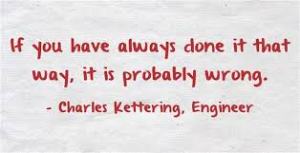I ask these questions a lot. The way we determine if something is working is as varied as the teachers designing and running special education programs.
Unfortunately, more often than not and without skipping a beat, the answer I most often hear to the first question is, yes. When I ask how they know, there is  usually silence, long pauses. Sometimes I am shown weak data that is unrelated to the intervention. Sometimes the response is a vague statement about how far Joey has come in the last 6 months.
usually silence, long pauses. Sometimes I am shown weak data that is unrelated to the intervention. Sometimes the response is a vague statement about how far Joey has come in the last 6 months.
What is more concerning though is that we aren’t asking ourselves if what we are doing is even what we should be doing.We just keep doing as we always have. And that usually means leaning harder and heavier on the kids rather than reassessing our interventions and programs.
When we provide services, write IEP goals, gather data for FBAs and develop BIPs, how often are we just doing what we have always done? I have read IEPs written by the same teacher for 4 different students and they all read the same. How 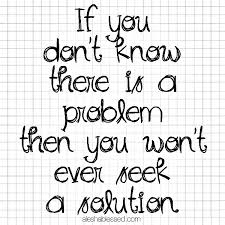 individualized is that?
individualized is that?
How many classrooms, particularly special education classrooms, just automatically use level systems and token economies? Every year. No matter what student needs are. Same level system and token economy used over and over.
So, I ask. Is it working?
Is what we are doing actually affecting positive change? Is what we are doing helping the students we work with? In what way? Are we even sure we have targeted the right behaviors to begin with?
That’s where we start. This is where we have to be totally objective, throw that plan on the table and walk around it, look at it from all angles and perspectives. This is hard. How many of us want to see that what we are doing is ineffective, that we could and should be trying something else? How many of us are comfortable evaluating our work? How many of us even know how to evaluate our work?
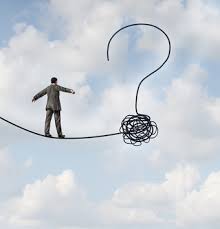 Two blog posts in a row and all I am doing is asking questions. But that is where we start. If we don’t ask mindful questions that make us consider what we are doing, how can we possibly know if what we are doing is working?
Two blog posts in a row and all I am doing is asking questions. But that is where we start. If we don’t ask mindful questions that make us consider what we are doing, how can we possibly know if what we are doing is working?
When I was working directly with kids I forced myself to ask if what I was doing was working. If I could say yes, I asked myself how do I really know? What evidence do I have that what I am doing is working?
And that is where it gets challenging. We have to be absolutely sure that we develop our programs and plans for students and that we are seeing the challenges clearly. That means we are not assuming. That means we are leaving all preconceived notions at the door. That means we are considering the whole child. That means we are totally in the moment of that student. The lenses are clean and clear of the debris left from our last critical analysis.
 We cannot develop an effective plan if we don’t look at the challenge through those clean lenses. How can we possibly write meaningful goals? How can we develop appropriate and effective interventions and programs without clearly understanding what we need to work on with our students, how to best support them, how to meet their needs?
We cannot develop an effective plan if we don’t look at the challenge through those clean lenses. How can we possibly write meaningful goals? How can we develop appropriate and effective interventions and programs without clearly understanding what we need to work on with our students, how to best support them, how to meet their needs?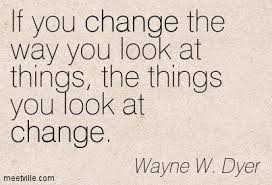
We can’t. And that is where we fail time and again. That is why kids don’t rid themselves of the heaviest of special education labels. ED, EBD, Bad Kid, Out of Control Kid, Crazy Kid.
Because what we are doing is absolutely not working.
I suggest the most common reason for little to no progress is that we have not correctly identified the challenge. We have not looked past surface and masking behaviors. We keep developing interventions that don’t even come close to the source of the unwanted behavior or learning difficulty.
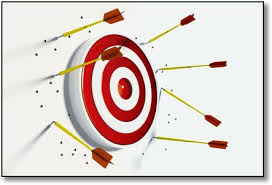
Unfortunately many of us are not trained to objectively analyze behaviors. We see an unwanted behavior and quickly conclude that is our target. But if we are aiming at the wrong target, how can we possibly develop effective interventions? If we are misdiagnosing, wrongly identifying the challenge, how can we help our students in any lasting way? Or, we might have correctly identified the target, but our interventions are inappropriate, ineffective, missing the target.
The goal is NOT to control kids.
Wait, what?
The goal is to help our students be comfortable and confident enough in school to take learning risks, to engage in what we offer, to develop healthy self concept, to define themselves in positive terms, to restore a sense of well-being.
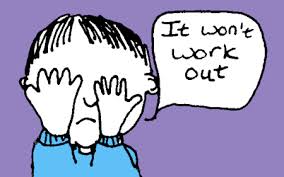 So, if our students are not making positive shifts in those ways, then what we are doing is most certainly not working.
So, if our students are not making positive shifts in those ways, then what we are doing is most certainly not working.
How do we know? Because our students are not happy. They are not comfortable in school. They are not engaged, they are not making and keeping friends, they are defining themselves in negative terms. Their peers are defining them in negative terms.
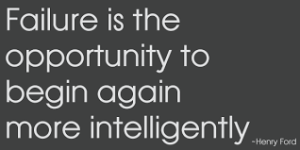
And that means what we are doing is not working.
Period.
It’s kind of simple if we look at it in those terms, isn’t it?

